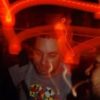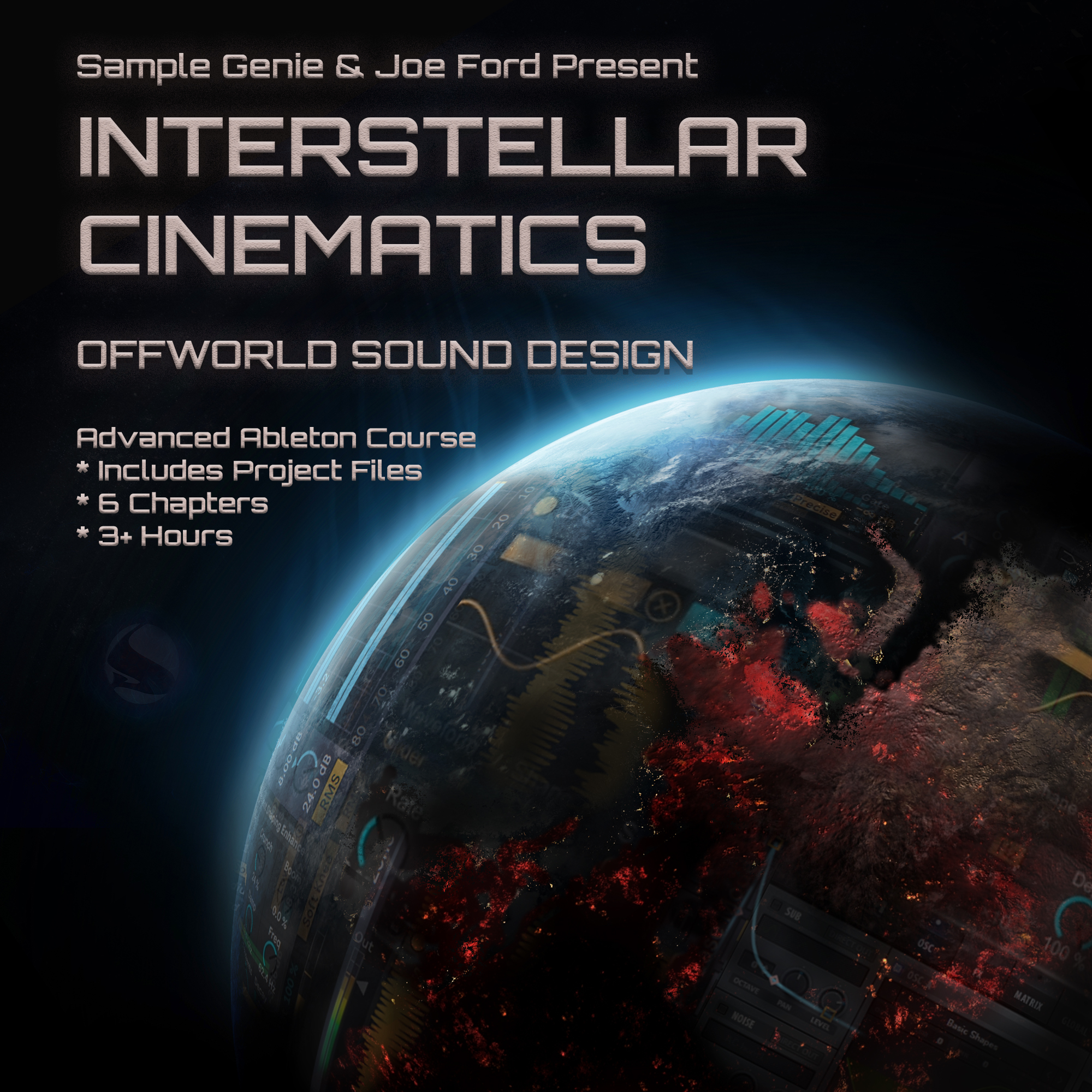Analysis of S6E11: Joe Ford – Advanced Distortion
- This topic has 0 replies, 1 voice, and was last updated 5 years, 2 months ago by ,
 Harry.
Harry.
-
AuthorPosts
-
-
2019-05-20 at 01:18:21 #80323,
 HarryModerator
HarryModeratorA three part, guest tutorial by Sample Genie season 5 artist Joe Ford.
—
Part 1 – Waveshapes (08:33)
– Joe Ford starts by stating he has developed new rules and techniques since switching his main DAW from Cubase to Ableton Live.01:10 – in his opinion, there are three main types of distortion, and demonstrates these over the next few minutes of the video.
– Uses a sine wave as the bassist’s for his explanation.
– Chooses a sine so there is one solid fundamental frequency.04:00 – distortion #1: saw-type distortion.
– Has odd & even harmonics across the whole spectrum.
– Smaller gaps between frequencies, when analyzing in a spectrum analyzer.
– Feels that iZotope Trash2’s Fuzz stage distortion fits this category.
– The tone created gives an idea of pitch.04:45 – distortion #2: square-type distortion.
– Only has odd harmonics.
– Big gaps between frequencies.
– Sounds more aggressive and dissonant, lacks the sense of pitch.
– Trash2’s tape saturation settings fit this category.05:00 – Joe Ford makes a comment about building basses up from sine waves to create pitched sounds by layering distortions. He said he used to use lots of wavetables, but he wants to avoid sounding similar to a lot of other current producers.
06:00 – distortion #3: wave shaping distortion.
– Distortion that removes the fundamental, and add ins upper harmonics.
– Trash2’s Heavy stage fits this style of distortion, a sine shape stage. Also recommends the Dense and Elastic shaping stages.
– This type of distortion can create a thick, chordal sound.08:00 – Also demonstrates how Ableton Live’s native Saturator and Vinyl Distortion can get similar results.
—
Part 2 – Signal Splitting (24:25)
– Goal of this section is putting the different types of distortions in to practice.
– Using sine waves as the core sound to demonstrate.
– Also reiterates that distorted sounds tend to be loud.02:00 – looking at the layers.
04:00 – Ableton Saturator with sinoid fold setting, creating the third type of distortion.
05:00 – explains how he uses racks (effects chains) to split sounds in to three layers (lows, mids, tops).
06:40 – mid channel with Ableton’s Vinyl Distortion inserted twice in a row.
08:10 – another Saturator with sinoid fold.
08:50 – likes to try out different FX chains before and after these distortions, a/b how they sound.
10:00 – this is Joe’s “go to movement chain”
– Low/mid split.
– Frequency shifters, which create notches.
– Sticks to using fine tuning.
– “Automation-free way of creating some movement”.13:00 – often saves racks when finding settings he likes.
13:55 – next rack is another three-layer split.
– Uses Trash2 on the mid-range layer.15:50 – using the same band of EQ before and after a mid-layer’s distortion, so you’re only hearing that range of the sound, EQ’ing out added unneeded frequencies.
17:15 – top layer’s chain is a compressor and Trash2.
20:00 – demonstrates what bass sounds like when low-end is not EQ’d out, says there are times when you want that sound.
—
Part 3 – Overtones (19:09)
– Bounced out a long sine wave, and made a copy that is pitched up two octaves, combined the two sounds by running them to a bus, and distorted them together on that bus.
– Wants to use the pitched sample to get a chordal harmonic.
– Also wants to isolate the mid-harmonic, using this mid-tone as the point he begins distortions.01:00 – Trash2 to create types 1 and 2 distortion.
01:55 – uses his layer container.
02:50 – needs to adjust the slopes of the mid-range EQ.
– The more sever the slope, in terms of the dB cutoff, the more of a build up of frequencies at those points. This is more obvious when working with mid-range sounds.03:40 – wants the mid band super specific.
04:10 – this is the new bass.
04:50 – working on getting some vibrato-style movement.
07:30 – uses Ableton’s Erosion plug-in to add some top end fuzz.
09:40 – Joe Ford’s bass movement rack, in use again.
From this point the video is more of a demonstration of experimenting, using different filters and EQs, testing the sounds he creates.
16:20 – putting the resampled audio in to a new sampler.
– Pitch bends.
– Reverb coming in at the end of the sound.18:30 – closing statement: “potential for this type of processing is endless, you can choose any harmonic, any pitch, and start making new sounds and chords from it.”
– Encourages people to experiment, states he wants to hear what people come up with using this approach to distortion."Knowledge kept is knowledge lost." - Bobbito Garcia
-
-
AuthorPosts
- You must be logged in to reply to this topic.


